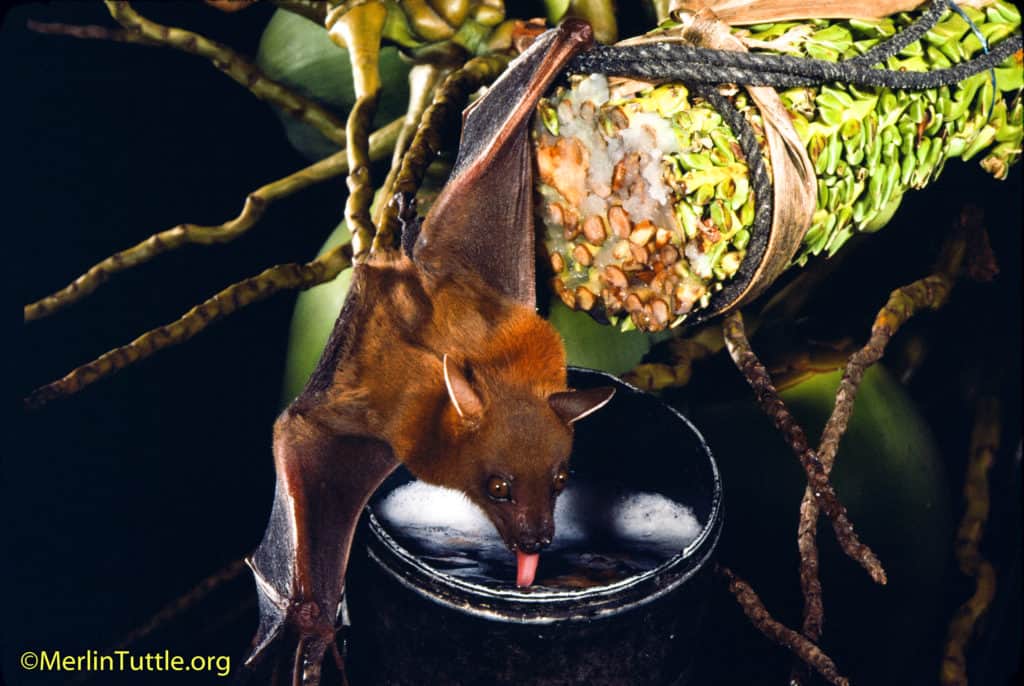Bat Flash: Countering Misinformation and Championing Evidence-Based Science
On March 6, 2024, the Wall Street Journal presented findings from the University of Leeds in their opinion piece, “Why Scientists Love Chasing Bats; The
Dear Mr. Tuttle,
“Thank you so much for your concern, and for reading the bioGraphic story about Nipah virus. I really appreciate it. I assure you that I am a strong proponent of bats and the tremendously important ecological roles they play. I also think that bats are simply amazing creatures in their many forms and functions. (When you have time, please take a look at bioGraphic‘s other bat stories as evidence of that appreciation: Glimmers in the Dark, Battling Disease, Bat Ballet, and Agave Whisperers.)”
He went on to explain it is never his intention to vilify or advocate killing of bats and hopes he is being clear.
Dear Steven,
“I do not doubt your concern for bats or your good intentions. As I’ve commented, most of your article was just fine. My complaint lies in labeling bats to be the most dangerous disease-spreading mammals. Our background experiences are apparently strikingly different. Mine regarding the impact of public fear have been summarized recently. I’d be delighted to learn more about whatever experiences led you to your apparently differing concerns. However, I’d much prefer to simply share our perspectives over the phone.”
Dear Merlin,
“Thank you for your reply. I look forward to the opportunity to speak with you. I first heard of your research when I was an undergrad studying zoology and ecology at Colorado State in the late 80’s, so it would be an honor to “meet” by phone.”
He further notes that he extensively interviewed disease experts and explains, “You will see in the article that I chose my words very carefully. I did not say that ‘bats are the most dangerous disease-spreading mammals.’ Humans hold that dubious distinction. What I wrote is that, ‘Among mammals, bats rank number one in terms of their role in spreading zoonotic diseases.’ That statement is most certainly true, according to my sources, as well as published research such as this Nature paper published in June 2017.
He also noted, “Some of your followers have expressed concern that if people in Bangladesh understand where the virus is coming from that they will begin to persecute bats.”
[Merlin’s thoughts—That is a serious misunderstanding. Scientists and conservationists have a responsibility to inform the public of disease sources, locations, and how to avoid them. We also must condemn sensational speculation and exaggeration, either of which can seriously harm both public health and bats.]
Dear Steven,
As per your suggestion, I’ve read your recent stories from bioGraphic and congratulate you on some very fine promotion of bat values. In fact, your “Glimmers in the Dark” article is the best I’ve seen on WNS. Given your clear concern for bats, I’m especially looking forward to speaking with you by phone when you return early in the New Year. When ready, simply suggest a time and phone number, and I’ll be happy to call.
We’ve likely had rather different experiences on the impact of exaggerated disease fears. Unlike you, I’ve had the misfortune of repeatedly seeing the results first hand.
During my early research in Tennessee, I met cave owners who burned many thousands of endangered gray bats by lighting kerosene in their roosts due to exaggerated rabies warnings. In Mexico, I took the attached photo of a few of the estimated 250,000 skeletons of insect-eating bats we found on reopening a roost where a fearful owner had sealed the bats inside. And, while photographing bats for my 2014 National Geographic article, I found a major bat cave recently sealed (with the bats inside) due to disease fears in a Cuban national park. In my experience, people seldom tolerate and often kill animals they fear. In fact, the free-tailed bat colony speculated to have been the source of the 2014 Ebola outbreak was burned in its roost.
Seeing how well intended you are, I hope you will read my 2017 report on fear-motivated bat killing and its impact on conservation. I am quite familiar with the Nature paper reporting that bats harbor a significantly higher proportion of zoonotic viruses than any other mammal group and look forward to discussing it with you.
[Note that Merlin has rebutted the aforementioned Nature article, read his response HERE.]

Steven Bedard’s article, “The Reservoir,” in the December 12 issue of bioGraphic contains many important points, and the accompanying photography by A.M. Ahad is outstanding. Nevertheless, the subtitle is exaggerated speculation. The claim that a bat-borne virus in Bangladesh is poised to become the next pandemic is no more than a long-shot guess.
Neither historic precedent nor credible science support the statement that “Among mammals, bats rank number one in terms of their role in spreading zoonotic diseases.” Bats have an outstanding record of not transmitting disease to humans, though they are poorly understood and widely feared. They are the easiest mammals to quickly sample, so virus hunters disproportionately focus on bats, of course finding more viruses in them because that is where they are looking!
Unfortunately, speculating possible linkages between bats and rare, but scary viruses has created a perfect storm of grant-getting success and media coverage. Resulting biases can impede public health progress and lead to public intolerance of bats that are ecologically and economically essential. (1) (2)
Predicting the source of the next pandemic is extremely complicated, costly and risks the reputations of scientists who claim such ability. Funding priorities should focus on prompt surveillance,not prediction. (3)
Nipah, like other so-called “emerging viruses,” is ancient. As reported in Bedard’s article, it likely has been infecting humans for hundreds of years, unrecognized due to its rarity. Nevertheless, as the human population expands beyond sustainability, poverty, stress, and the conditions favorable to pandemics will make major outbreaks virtually inevitable, as stated. But it’s anybody’s guess where they will come from. Focusing too narrowly on bats may be impeding progress. Unsustainable growth in human populations is the real problem, one which few are willing to address.

Education regarding the risks of drinking raw palm juice is commendable. Perhaps the next step should be family planning. Nature has two remedies for overpopulation, pandemics and famine. Studies of rare diseases in bats will prevent neither.
Our combined voices can make a difference. Choose any or all means of contact to reach out to bioGraphic editors and author to politely share your opinion in your own words. Editors do take notice. Remember, your response can be very simple such as, “I don’t appreciate exaggerated speculation that creates needless fear of bats.” Editors just need to know you like or dislike an article in order for you to have impact. It’s numbers that count. Bats need all of you!
References
Love our content? Support us by sharing it!
On March 6, 2024, the Wall Street Journal presented findings from the University of Leeds in their opinion piece, “Why Scientists Love Chasing Bats; The
Response to Misleading Scientific American Bat Story I am responding to the article titled, “A Secret Weapon in Preventing the Next Pandemic: Fruit Bats,” which
Believe it or not, bats have one of our planet’s finest records of living safely with humans. Despite frequent claims to the contrary, they harbor
The series Curious Kids, hosted by The Conversation, is designed to provide expert answers to questions asked by children from around the world. The December
2024 © Merlin Tuttle’s Bat Conservation. All rights reserved.
Daniel Hargreaves is a lifelong bat conservationist who has worked globally to facilitate progress, including co-founding Trinibats, a non-profit bat conservation organization in Trinidad. He has organized and led field workshops worldwide, including five for MTBC. Following a long and successful career in business, he now manages a network of bat reserves for the Vincent Wildlife Trust in the UK, supervising research and development of new and innovative conservation techniques. Daniel also is one of the world’s premier bat photographers.
Madelline Mathis has a degree in environmental studies from Rollins College and a passion for wildlife conservation. She is an outstanding nature photographer who has worked extensively with Merlin and other MTBC staff studying and photographing bats in Mozambique, Cuba, Costa Rica, and Texas. Following college graduation, she was employed as an environmental specialist for the Florida Department of Environmental Protection. She subsequently founded the Florida chapter of the International DarkSky Association and currently serves on the board of DarkSky Texas. She also serves on the board of Houston Wilderness and was appointed to the Austin Water Resource Community Planning Task Force.
Michael Lazari Karapetian has over twenty years of investment management experience. He has a degree in business management, is a certified NBA agent, and gained early experience as a money manager for the Bank of America where he established model portfolios for high-net-worth clients. In 2003 he founded Lazari Capital Management, Inc. and Lazari Asset Management, Inc. He is President and CIO of both and manages over a half a billion in assets. In his personal time he champions philanthropic causes. He serves on the board of Moravian College and has a strong affinity for wildlife, both funding and volunteering on behalf of endangered species.